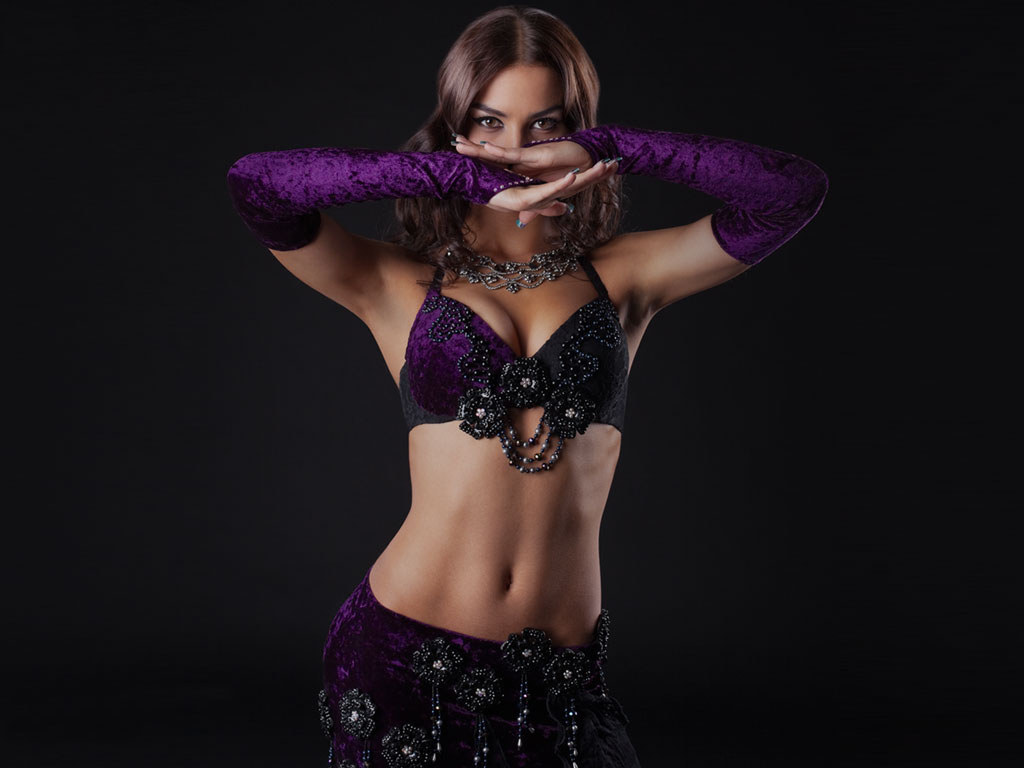Dance Insights
A FEW WORDS ABOUT BELLY DANCE
History of Belly Dance Costume
The Belly Dance costume in the Arabic language is called “Bedleh”- it is a Belly Dance skirt, belt, and bodice decorated with beads.
The Belly Dance costume is directed at underlining the plasticity and grace of the Belly Dancer. Richly embroidered by paillettes, beads, rhinestones, or brilliant threads, the costume for Belly Dance transmits the spirit of the East – hot, magnificent, sensual. Some national Belly Dance costumes, for example, of the Persian dancers, differ from costumes of a modern Belly Dance and can be very closed, leaving the audience a painful innuendo about an artistic image and the performer of the dance.
Belly Dance: history of Emergence and Development
Initially, belly dance appeared in Egypt. The Belly dance was simply a dance, not connected with any ceremonies, and was executed for entertainment. With the arrival to Egypt of Moslem popularity of belly dance started decreasing until practically came to naught. In the nineteenth century, after a gain French of Africa, the former bewitching art of belly dance started reviving and getting into the Western world.
The dance evolved and developed, changed under the influence of dances of the different countries – Greece, Turkey, North Africa, Persia, and India, incorporating elements of the Gipsy and Spanish dances. Under “Raks Sharqi”, often mean “female solo dance”, unlike the folklore group. Dance with a large number of movements of hips is associated with Baladi now, and the center of movements is displaced up. In Western countries, Raks Sharqi becomes known as “belly dance”. This name came from the wrong interpretation of the term Baladi or from the French saying “Danse du Ventre.” In our days the “belly dance” sometimes is called “Cabaret” and it is very popular now around the world.
Belly Dance or fitness?
Belly Dance in the Arabic language is known as Raqs Sharqi, and in the Turkish language— as Oryantal dans, which could be translated as “oriental dance”. The uniqueness of the oriental stomach dance is in its plasticity. Many of the movements come from dances of fertilization, religious worship, and rituals of birth rate.
Many movements are borrowed from dances of different countries. The interpenetration of dancing forms and customs led, for example, to the emergence of the Spanish dance of flamenco whose cornerstone is a large number of methods of belly dance.
Belly dance shows all beauty, sensuality, and grace of a female body, it isn’t simply the movements, and a form of expression of emotions and feelings. Practically any holiday doesn’t do without belly dancing in the Middle East.
Belly dance or any other sports?
Belly Dance is very useful for your health. It will help to make your hips more harmonious, and your waist–thinner. It will strengthen muscles of abdominal tension that improve the work of the gastrointestinal tract and promotes the removal of slags from your body. If in shape you have to strain muscles all the time, in Belly Dancing you just have to give your body the freedom.
It is enough a half an hour of exercise per day. Also, you may start Belly Dancing at any age. It is important to begin the development of Belly Dancing with the main basic movements – “eights” with hips. All exercises are carried out with a direct back and straightened shoulders.
The basics of Belly Dancing are free improvisation and freedom.
Movements in Belly Dance.
“Turkish statue”
Both feet are placed on the width of the shoulders and slightly bent in the knees. Hands are connected over the head. A helpless gesture is smoothly made in turn so that as a result, the right hand is at the level of a shoulder palm up, and behind it, the left falls. Then hands in turn fall to the level of hips, palms down.
“Magic circle”
Only the top part of the body is involved in this exercise, thus the head, hands, shoulders, and all lower parts aren’t mobile. The torso is taken out to the right, then taken away forward, to the left, and then back. All movements should be smooth.
“The streaming silk” (“Eight”)
The right hip is taken away back, on a diagonal, and then by a semicircle is taken out forward. The same repeats for the left hip.
“The ringing jewelry”
The right foot which is slightly bent in the knee is put on a sock before the left. The right hip is developed forward and up. Body not movably. The hip makes a sharp “dropping” down. Repeat it several times.
“Snake”
Hips are taken most away back, the back is slightly bent forward, hands are cramped over the head – the body is curved by “wave”. Hips smoothly move forward and up, the movement is transferred to shoulders which leave back. Then the body comes back to a starting position.
Belly Dance Music
Eastern music for Belly Dance is a unique composition of various fast melodies and unique elements – the Belly Dance costume with bells and cymbals.
The main principle of the Belly Dance is a bright start, quiet music in the middle of the representation, and a bright performance before the final part.


